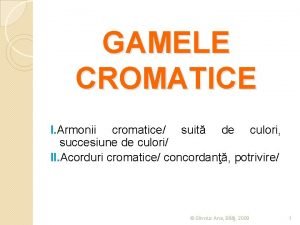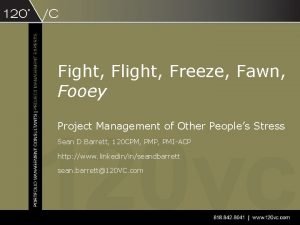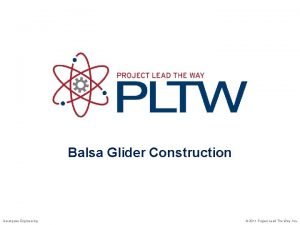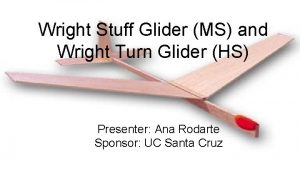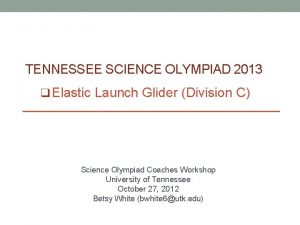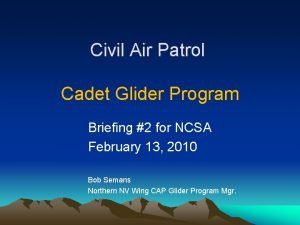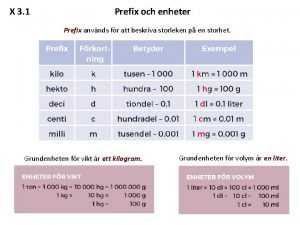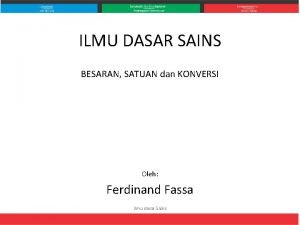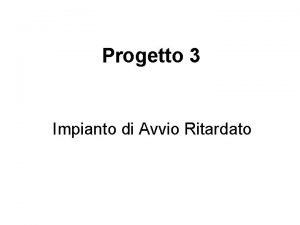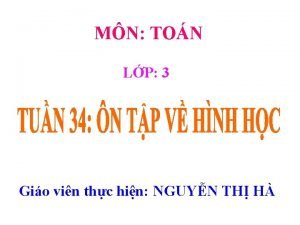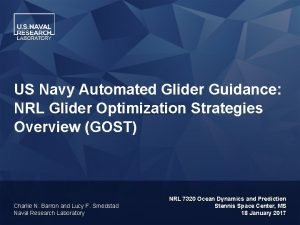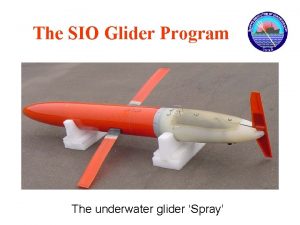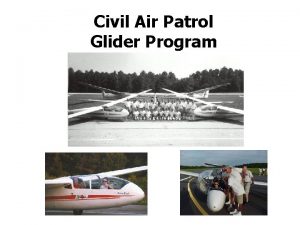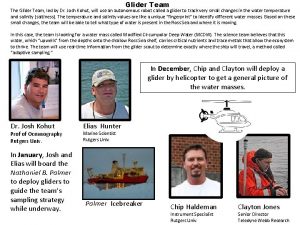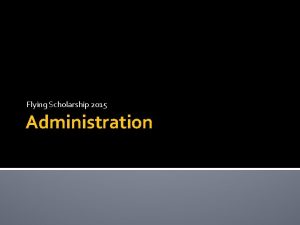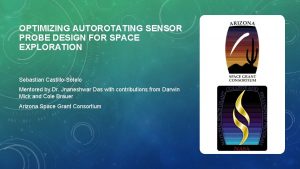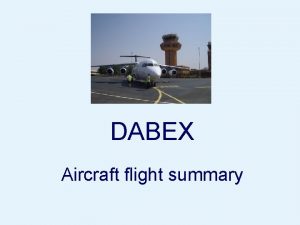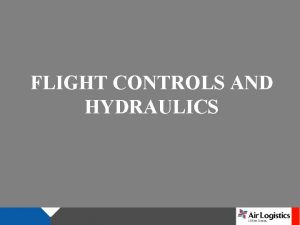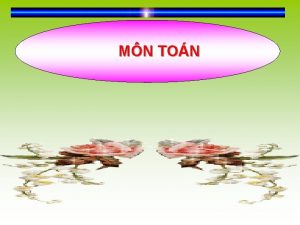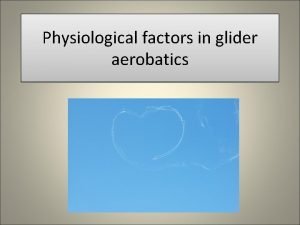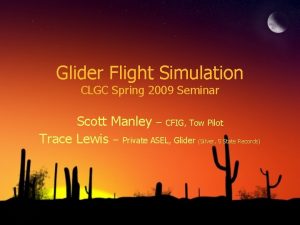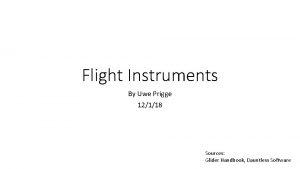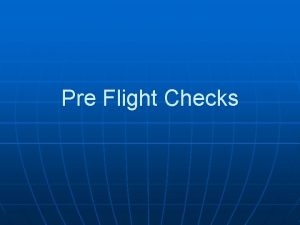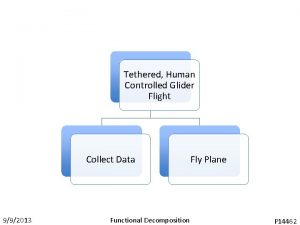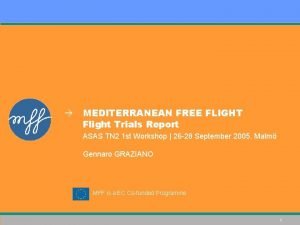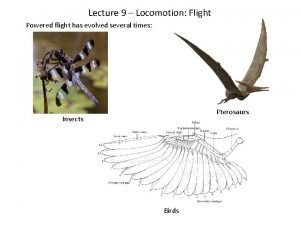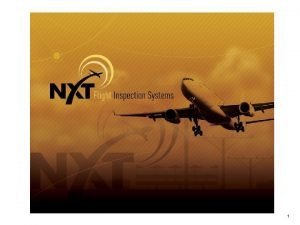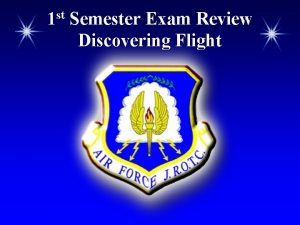AllEnginesInoperative From 8 Ton Glider to Autorotating Flight

























- Slides: 25

All-Engines-Inoperative From 8 -Ton Glider to Autorotating Flight Test Program Helicopter in 12 Results Seconds Dan Wells Paul Edwards Agusta. Westland Proprietary Information

Agusta. Westland AW 609 • Agusta. Westland is pursueing the first FAA Type-Certification of a civil tiltrotor aircraft • FAA Certification basis requires all-enginesinoperative conversions from APLN to VTOL modes Agusta. Westland Proprietary Information 2

AW 609 Specifications 9 pax / 16, 800 lb Max GW (Useful Load 5500 lb) Increased GW (STOL) up to 18000 lb Up to 675 nm Range 25, 000 ft Service Ceiling / 275 kts Pressurized cabin Dual Pilot IFR Transport Category Design Standards Flight into known icing Cleared to fly Over Water Transport & Normal Category Performance Agusta. Westland Proprietary Information 3

Design Features Hydraulic & Electrical • Triplex 3000 psi Hyd Sys • 3 DC GENS + 28 Ah. Batt Rotors / Drive • 26 ft. dia. Proprotors w/mechanical interconnect • 2 PMG’s + 2 FCC BATT’s Conversion System • Via dual telescopic ball screws w/mechanical interconnect • 2 AC GENS Ice Protection Power Plant • Rotor Anti-ice / De-ice • PWC PT 6 C-67 A engines • Wing De-ice Boots • AEO Power Ratings: Takeoff (1940 shp), MCP • Engine Inlet • Heated Windshield • OEI moving soft stop, optimal rotor rpm, super droop Airframe Flight Controls/Avionics • FCS – Triplex Digital Full Authority FBW • Collins Proline Fusion avionics suite Fuel System • 2480 lb capacity • 10 crashworthy fuel cells Agusta. Westland Proprietary Information • Largely Composite Fuselage • Pressurized Cabin • Vapor Cycle Air Conditioning • Composite Wing • Rudderless 4

Flight Controls Agusta. Westland Proprietary Information 5

Flight Regime Transition • • • Pre-set nacelle angles Control phasing FCS augmentation Conversion protection Emergency re-conversion 0 deg. 240 knots Conversion Corridor 50 deg. 140 knots 75 deg. 80 knots Nacelle Control Power Lever Grip Agusta. Westland Proprietary Information 6

Tiltrotor Autorotation History § XV-3 performed a touchdown autorotation from VTOL mode § XV-15 performed AEI conversion from APLN mode to VTOL § MV-22 performed a few VTOL autorotation entries and an AEI APLN-mode glide 7

Autorotation You Ask? § A rotary-wing maneuver to safely land a helicopter after all engines have failed § Rotary-wing aircraft reduce rotor blade pitch angle to minimum (not negative) to autorotate § The rate of descent changes the airflow angle to below horizontal (no induced flow) and there is a forward-tilted lift vector created § Sprag (over-running) clutch allows rotor to turn without dragging engine along 8

The Lift Vector in Autorotation § Reverse airflow drives the rotor system § In a helicopter, the total vector tilted forward from about 25% to 70% span of the rotor blade § Blade twist on tiltrotor shifts driven region outboard Total Force Direction of Rotation or Vect w o l rf al Ai Tot Rotor RPM Ro. D Flow Blade regions in autorotation 9

All Engines Inoperative Requirements § AW 609 Certification basis requires that with AEI: - Aircraft must be able to be converted to a safe landing configuration (loads and HQ issue) - Must be controllable in all modes: APLN, VTOL, CONV - Must stay within minimum and maximum allowed rotor rpm’s - Must demonstrate a landing from an autorotation Agusta. Westland Proprietary Information 10

All Engines Inoperative – Emergency Re-conversion to Autorotation Airplane mode gliding Helicopter Autorotation Rapid Reconversion Flare before touchdown “Maybe we should try this in the sim first? ” Agusta. Westland Proprietary Information 11

Test Strategy § Traditional incremental approach difficult to implement § Establish and explore steady state regions § Then test the transition Agusta. Westland Proprietary Information 12

The Build-up to AEI § § § Engine reactions to condition lever changes in flight Engine recovery times Rotor RPM reactions to loss of one engine Flapping angles with one-engine-inoperative Flapping angles during power applications Testing the emergency re-conversion mode Agusta. Westland Proprietary Information 13

Steady-State AEI - Test Results § Evaluated steady-state conditions of windmilling in APLN mode and autorotation in VTOL mode, cleared weight, CG and VTOL airspeed envelope § Performed 30 deg bank angle turns, speed changes, aeroelastic stability testing (and ASE) in both APLN and VTOL § APLN: 130 to 160 knots, 84% and 100% rpm, rpm always constant (because it is governed by FCCs even with AEI) § VTOL: 70 to 130 knots, observed that rpm droops w/ higher speed and lower weight (FCC trying to keep it at 100% but in-flow angle insufficient) Agusta. Westland Proprietary Information 14

Steady Autorotation Rotor RPM vs Airspeed 15 Agusta. Westland Proprietary Information

AEI Re-Conversions APLN to Autorotation § Simulator preparation § Transitioned to 95 degrees nacelle angle autorotation from AEI (windmilling) APLN § Evaluated pitch-up maneuver • • various start points RPM based and Nacelle angle based § 28 iterations § Conclusions: • • Use Nacelle angle to initiate the flare Safe and controllable with little pilot compensation 140 – 150 knots slowing to 70 knots is best profile Wing lift is not the pilot’s friend here Agusta. Westland Proprietary Information 16

Full Re-conversion, Light Weight, Aft CG Airspeed Nacelle Angle Rotor Speed Vertical Speed Agusta. Westland Proprietary Information 17

Full Re-conversion, Same Event Continued Total Flapping Nacelle Angle Rotor Speed Tip Path Plane Ao. A Agusta. Westland Proprietary Information 18

AEI Re-Conversions 75 Nacelle to Autorotation § 75 Nacelle to 95 Nacelle - 43 iterations in a variety of flight profiles § Required to test failure from OEI failure cases where 75 Nacelle is a recommended configuration § Delays of up to 2 seconds § FCC compensates Rotor RPM with blade pitch initially § But any delay here increases time in edge-wise flow region § No issues uncovered – No droop below 80% Agusta. Westland Proprietary Information 19

Flare Effectiveness § After establishing autorotational glide, evaluated flare effectiveness, typically pitching up to 12 – 15 deg § Flaring reduces sink rate to zero at higher entry airspeeds § Rotor RPM returns to 100%, but not higher § Elevator reduces flapping angles of rotor system by assisting in the pitch-up § Wing contributes when flare is initiated at higher speeds, i. e. above 100 knots Agusta. Westland Proprietary Information 20

Flare Effectiveness, Heavy Gross Weight Vertical Speed Airspeed Rotor Speed Pitch Attitude Agusta. Westland Proprietary Information 21

Yoke Bending Moments Agusta. Westland Proprietary Information 22

Agusta. Westland Proprietary Information 23

Lessons Learned § Establishing ‘safe’ areas on each end of the most dynamic phase provided valuable data and experience § Pitch up maneuver successfully maintained rotor rpm above minimum § Pitch-up maneuver was easier and more robust based on nacelle angle instead of rotor rpm decay § Maintaining descent rate was important to maintaining AEI rotor rpm in transition from APLN to VTOL § Rotor RPM is sensitive to airspeed in VTOL mode § Wing / elevator contribution in flare reduced rotor flapping, increased flare effectiveness Agusta. Westland Proprietary Information 24

Questions 25
 Game de culori
Game de culori Ton ton
Ton ton Tabel angka indek
Tabel angka indek Que ton aliment soit ton médicament
Que ton aliment soit ton médicament Sutterhe
Sutterhe Glider horizontal stabilizer
Glider horizontal stabilizer Wright turn glider
Wright turn glider Pregnant sugar glider
Pregnant sugar glider Elastic launch glider
Elastic launch glider Glider project design
Glider project design Civil air patrol ncsa
Civil air patrol ncsa Balsa wood glider dimensions
Balsa wood glider dimensions Gravity glider brain gym
Gravity glider brain gym Prefix gram
Prefix gram Par ton corps tu nous donnes la vie
Par ton corps tu nous donnes la vie Afektivni ton
Afektivni ton Buktikan rumus rumus berikut benar secara dimensi
Buktikan rumus rumus berikut benar secara dimensi Adjectives with p
Adjectives with p Avvio ritardato
Avvio ritardato K-ton
K-ton Bon ton pravila
Bon ton pravila Ton cur
Ton cur Metodika likovnog vaspitanja
Metodika likovnog vaspitanja Bon voyage sta znaci
Bon voyage sta znaci O mon sauveur a toi seul je veux etre
O mon sauveur a toi seul je veux etre Mn ton
Mn ton
